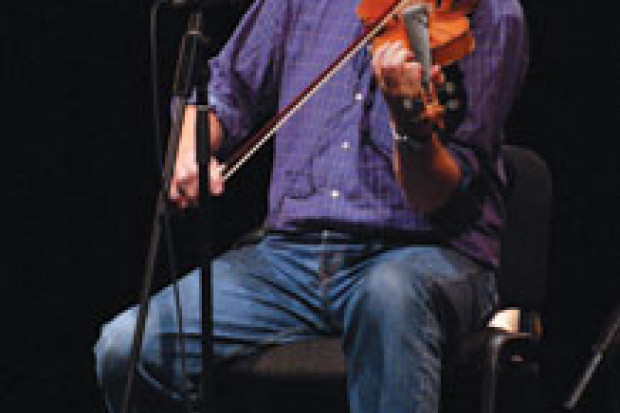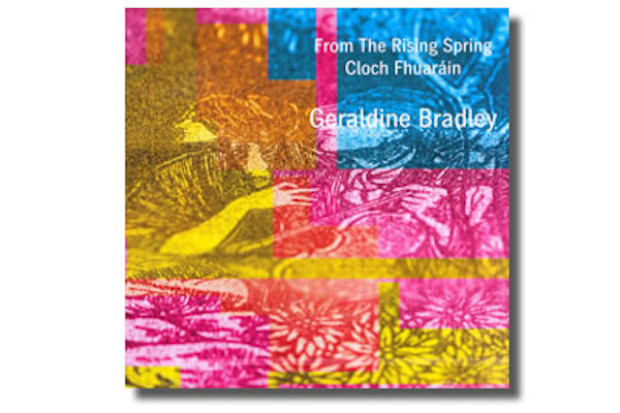
The Pressure to Conform
In Ireland, traditional music radio programmes are loyal to the traditional music community. Almost everyone’s new recording appears to receive at least some air-time, with a gradual thinning out as the years goes on. That is the way it should be, though for those seeking some discrimination, it is a slow process.
Raidió na Gaeltachta sometimes brings this loyalty to new levels, playing live recordings of traditional music that are quite clearly not about the music, but are about community, occasion and celebration – and one has to admire the station for doing that. On a strictly musical level, however, for those who care to speed up the thinning out process, one could eavesdrop on radio programmes that are constitutionally adventurous, and which take in Irish traditional music only as part of a wider remit. It is here that we experience what is perceived outside the traditional music world as being adventurous and challenging. Various programmes come to mind – Rogha John Spillane on RTÉ RnaG, John Kelly’s The Mystery Train on RTÉ 1 and Gerry Godley’s Reels to Ragas on RTÉ lyric fm. An equally interesting example, however, is Late Junction on BBC Radio 3.
Late Junction is a giant of a programme in that it actively searches out intelligent and challenging traditional music, contemporary classical music and electronica from throughout the world. There appears to be nothing complacent about its playlist. It is constantly trying to challenge the listener and stretch their appreciation of music. Significantly, it also has the largest listenership of the entire range of programmes on BBC Radio 3 – which is of course a predominantly classical music station. It makes one think about what we presume the great majority of listeners are interested in.
Given the geographical spread of music that Late Junction tries to cover, it is gratifying that Irish traditional music makes it on to the playlist at all, but at that, we are only talking about perhaps one or two tracks every three programmes. My own listening experience is that fiddler Martin Hayes has featured most regularly of Irish artists, but so too has flautist Michael McGoldrick as well as sean-nós singer Iarla Ó Lionáird. On St Patrick’s Day last, the music of Ireland was featured on a special edition of Late Junction. Alongside a live link-up with Mícheál Ó Súilleabháin and the Irish World Music Centre, there was music from composers Kevin Volans and Roger Doyle, a track of sean-nós singing from Joe Heaney, and tune sets from Sharon Shannon and De Dannan.
One thing that strikes me about listening to Late Junction is that, almost as a rule, the traditional Irish artists of today that are featured are those who have, at one time or another, received heavy criticism from other traditional musicians, for either trying something different, or for appearing to epitomise a new, unwelcome set of ideas. One doubts, however, that Late Junction could have such in-depth knowledge of the politics of the traditional music scene that it would have picked up on that. It just seems to naturally pick out the non-conformists.
Listening regularly, over the internet, to the eclectic mix of music on this programme, enjoying how it drags my imagination out of the Irish scene and forces me to consider this music on a much wider canvas, it often occurs to me that it is no small feat – both musically and in terms of courage – to produce traditional Irish music that can sit alongside the other extraordinary tracks on this programme and stand up to them in terms of quality. For with Late Junction, there is little or no sense of a common heritage to connect the audience, and also absent are the allowances that an Irish audience would make for the music played on an Irish traditional music programme. In the Late Junction instance, it is singularly about the music, the only qualifier being the element of adventure and risk that a piece includes.
The centre and the periphery
Artists are natural non-conformists, but they also feel the pressure of expectation. I think we greatly underestimate the pressure that there is on Irish traditional musicians who live and play in Ireland to comform more or less to what every other Irish traditional musician is doing. This is, after all, the centre of the world when it comes to traditional Irish music – now an international art form like jazz. The musicians here set the standard for the globe. All traditional musicians in Ireland who play publicly have experience of people coming from all over to hear them do what they do. This, for the lovers of traditional Irish music everywhere, is Mecca.
One must presume that this brings a certain amount of artistic pressure to the scene, a slight tightening of the throat perhaps – not to mention tentacled commercial pressure. There is likely to be much more freedom at the periphery, wherever that may be, though it is unlikely to be in Ireland. Consider, for example, the fact that a great amount of the most challenging traditional Irish music has come from abroad – from Michael Coleman in the early 1900s to Martin Hayes, Eileen Ivers, Seamus Egan and Michael McGoldrick in recent years. Consider also the non-stop touring abroad that traditional musicians do. It is of course an economic imperative, but it is also driven by a need for freedom and the correlating need to get out of Ireland.
And then, of course, when the traditional musicians return, they can appreciate anew the conformity of the session and the performance scene here. As long as there’s an escape route, we tolerate the hardened structure. This conformity is actually regularly interpreted as evidence of the strength of traditional music, but it can sometimes leave you cold. Because everybody is very well behaved, playing very nice music in sessions, at festivals, on concert stages, on recordings, we can presume that this is traditional music at its final destination – the Mecca the visitors seek. Audiences like it. Tourists like it. Publicans like it. The media likes it. Heck, even the Arts Council now likes it. In this neatly fitted-out room, where the generations probably mingle closer than in any other art form in the country, the impulse to produce music that is familiar and that will automatically be accepted by one’s peers and mentors is hard to ignore.
Reading the notes of a recent CD of very nice traditional Irish music, I sank slightly reading the compliment an invited sleevenote writer paid the musicians. He said there was ‘no silly gimmickry’. By this, the writer meant, one presumes, that there was no attempt at trying a different approach to the playing of traditional music. It is garbled nonsense in one sense, but at the same time every traditional musician knows what it means. This is an example of the subtle signals that exist throughout the Irish traditional music world, urging individual traditional musicians to conform to other people’s ideas of music as opposed to their own. If I was to sift through the many other traditional music CDs, I’m sure I would find many more such utterances.
As an aside, I do not want to give any weight to that old idea that there is a group of ‘purists’ or ‘folk police’ out there who are monitoring the undulations of the traditional music scene and writing their reports. The pressure I am talking about emanates from everyone. It is a dynamic that is a natural result of intense activity in a small space.
In this space, sometimes traditional musicians sense or experience criticism for experimenting too much. The converse is just as stifling. It has become de rigeur for senior traditional musicians to heap praise upon the current crop of young traditional musicians for their commitment to the tradition. With such praise from one’s heroes and mentors, the impulse not to let them down by stretching beyond them and breaking their rules is increased. It is a subtle, perhaps innocent, but certainly intense form of pressure to conform.
Of course, the verbal language of traditional music is so tied up with concepts of tradition and continuity that it is probably difficult to give praise in any other way, but one wonders what the overall impact of it is.
Sometimes, it seems that traditional musicians remain in neutral in Ireland, as a result of the environment they find themselves in rather than any lack of ideas – revving the engine impressively, yet perhaps reluctant to take off. I often wonder what I’m missing out on. But when those ideas do escape, I know where I expect to hear them first.
Published on 1 November 2005
Toner Quinn is Editor of the Journal of Music. His new book, What Ireland Can Teach the World About Music, is available here. Toner will be giving a lecture exploring some of the ideas in the book on Saturday 11 May 2024 at 3pm at Farmleigh House in Dublin. For booking, visit https://bit.ly/3x2yCL8.














